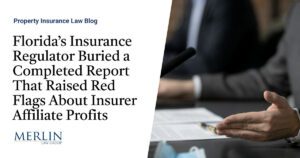Collapse Caused by Termites and Wood Rot Not Covered
The court found that damage to the insured's home was not due to a covered collapse, but was caused by wood rot and termite damage. Pezzano v. Liberty Mut. Midatlantic Inc. Co., 2024 U.S. Dist. LEXIS 46971 (D. N.J. March 18, 2024).
When putting up a Christmas tree, the insured pulled a couch away from the wall and noticed a gap between the floor and the wall. She was not aware of when or how the gap was formed. Upon inspection, it was discovered that a beam was cracked in the crawl space. Efforts were made to shore the cracked beam.
Subsequently, the insured retained The Ramtin Group to investigate. Ramtin opined the damage to the beam was caused by wood rot and termite damage, and that deterioration of the beam happened over a period of time. The report agreed that the shoring of the beam was the correct course of action; othewise the house would have been at risk of collapse.
Liberty Mutual retained its own expert, Russel E. Daniels, P.E. His report concluded that the damage to the property was caused by wood rot and insects. Based upon the conclusions of both parties' experts, it was undisputed that the root cause of damage to the structural beam was wood rot and termite damage.
The policy excluded loss caused by "wear and tear marring, deterioration." Also excluded was loss caused by "settling, shrinking, bulging or expansion." Collapse was covered as Additional Coverage. Collapse was defined as "an abrupt falling down or caving in of a building with the result that the building cannot be occupied for its current intended purpose."
The insured failed to present undisputed facts to establish a collapse under this definition. Both experts concluded that the supporting bemas in the crawlspace under the floor was cauesd over time by termites and standing water on the crawlspace foundation floor that resulted in mold and wood rot. Accordingly, there was no coverage for collapse.




